This structure has become an architectural and emotional force in Lower Manhattan, and these One World Trade Center facts prove it
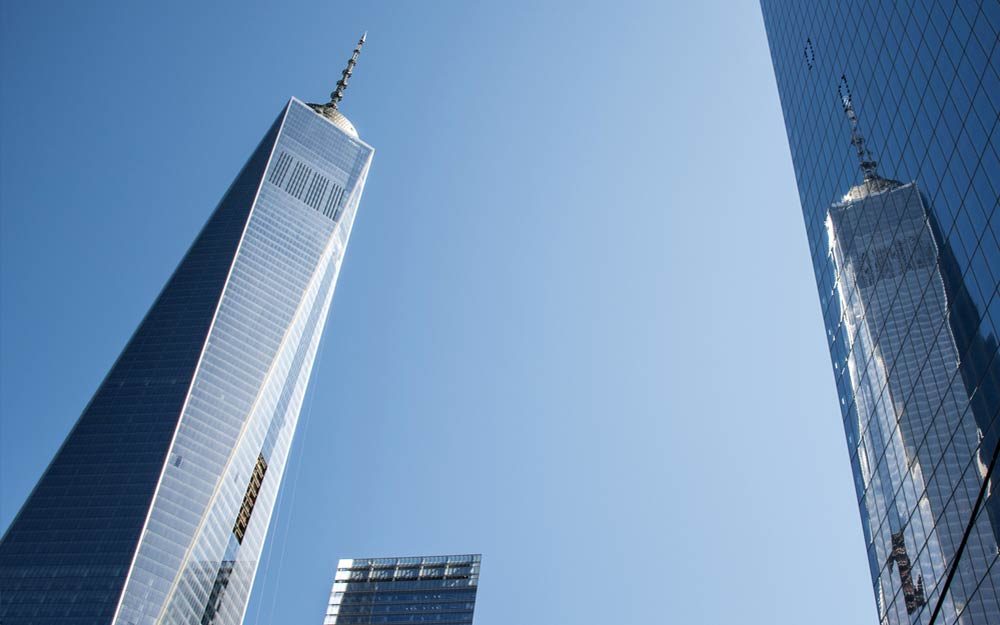
11 Fascinating One World Trade Center Facts You Need to Know

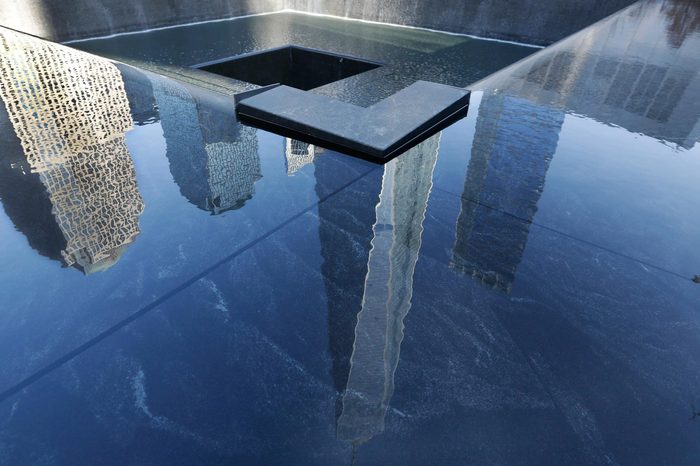
One World Trade Center pays tribute
One World Trade Center was built in remembrance of the victims of the terrorist attack on September 11, 2001. It is a permanent reminder of the lives that were lost that day, the many survivor stories and the country’s combined hopes for the future.
Two large square pools, each with a waterfall, stand in the exact spots of the twin towers. Despite being set in one of the busiest areas of Manhattan, the memorial remains a tranquil and peaceful spot for New Yorkers and visitors to pay tribute. Each of the victims’ names is inscribed on the sides of the pools, and visitors often leave roses next to the names of people they knew.
More than just a structure, One World Trade Center signifies resilience, and it has become a significant NYC iconic landmark. The building is also a popular location for events and exhibitions that symbolize remembrance and unity while also focusing on the future.
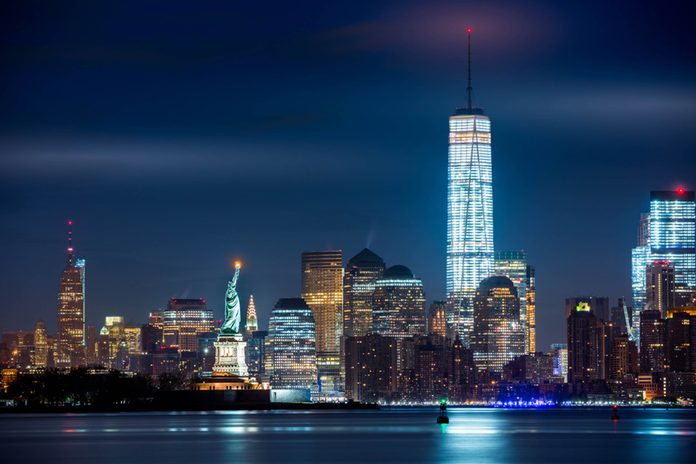
One World Trade Center is where NYC works and moves
One World Trade Center has 104 floors, 71 of which are office space. Tenants include the U.S. General Service Administration and magazine publisher Condé Nast, the first tenant to occupy the building. Below the site, a concourse offers 55,000 square feet of retail space, connections to 11 New York City subways and PATH trains, and underground access to the ferry terminal on the Hudson River.
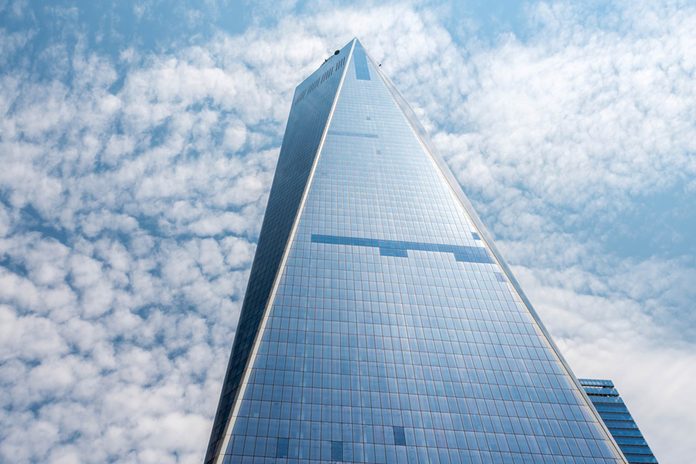
One World Trade Center is 1,776 feet tall
Here’s a compelling One World Trade Center fact: Including its 18-piece spire, One World Trade Center stands at 1,776 feet, a direct reference to 1776, the year the Declaration of Independence was signed. However, even at this soaring height, architectural changes to the spire led to controversy around whether it’s the tallest building in the United States. In fact, in Chicago, where the 1,451-foot-tall Willis Tower previously held the national record for tallest building, residents joined the debate over how a skyscraper’s true height should be determined, since subtracting One World Trade Center’s spire limits its total height to 1,368 feet.
In 2013, One World Trade Center was officially declared the tallest building in New York, America and the Western Hemisphere by the Council on Tall Buildings and Urban Habitat.
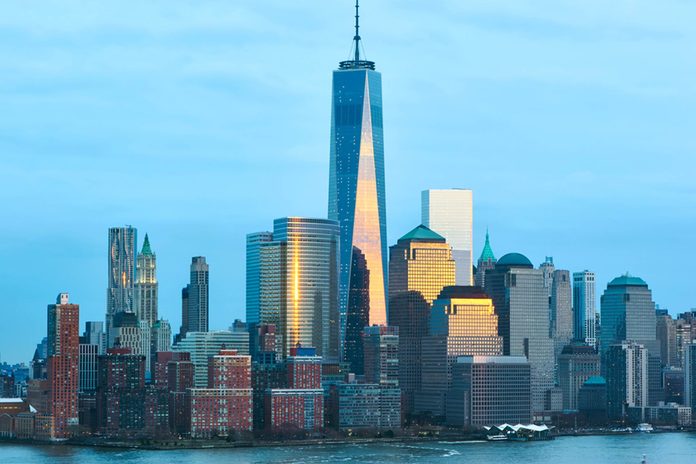
One World Trade Center was built to be rock solid
One World Trade Center contains approximately 40,800 metric tons of structural steel. And according to the official 9/11 Memorial blog, the 9/11 Memorial and Museum contains 49,000 cubic yards of concrete, enough to pave more than 200 miles of New York City sidewalks. To put that figure in perspective, 200 miles is the rough equivalent of 4,000 NYC blocks.
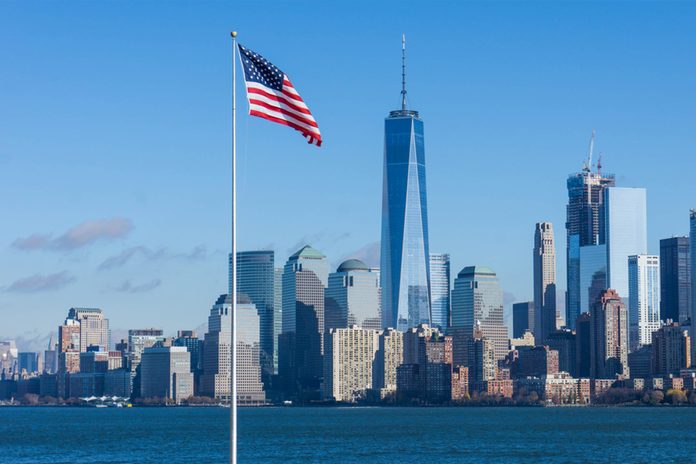
One World Trade Center honors the Twin Towers
The tower’s three-level observation deck, known as One World Observatory, was specifically constructed with the original Twin Towers in mind. The deck itself begins at 1,362 feet, and a glass parapet extends to 1,368 feet—the exact height of the South and North Towers.

One World Trade Center is engineered for safety
Heeding the structural and safety failures of the Twin Towers, developers carefully designed the new tower to be one of the safest office buildings in the world. Among One World Trade Center’s unique construction elements are its high-strength concrete, which makes it safe even from earthquakes and high-intensity winds. Incorporating these high-safety features addresses some of the questions people still have about 9/11 and that continue to spark curiosity and debate. Between the dense fireproofing and additional staircase for first responders, the tower also well exceeds the city’s building safety code requirements.
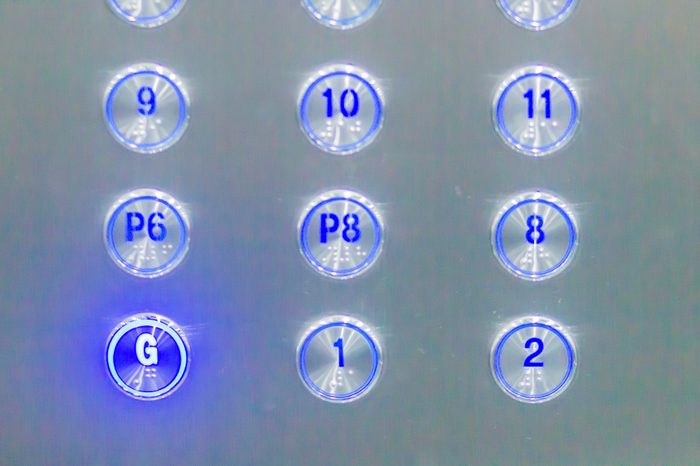
One World Trade Center has ultra-fast elevators
One World Trade Center has a total of 73 elevators, and they travel as fast as 23 miles per hour. That means that an elevator can go from the ground floor to the 102nd floor in just 60 seconds!
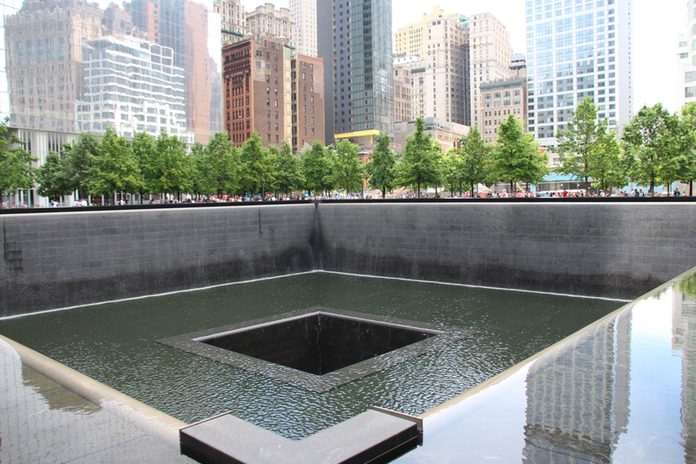
One World Trade Center is a sustainable skyscraper
In addition to the many green features of the One World Trade Center tower—it was built from recycled construction debris and materials, and it can generate power internally—the entire site was constructed to collect rainwater to help care for the plaza’s greenery, cool the building and replenish the memorial fountain. These high-sustainability measures earned One World Trade Center its LEED Gold certification in 2016.
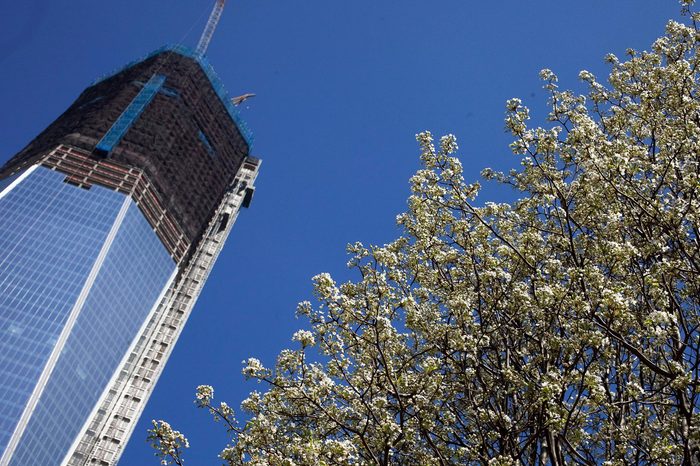
One World Trade Center’s “Survivor Tree” lives on
One of the trees that was planted around the memorial actually lived through the attack on 9/11. Known as the “Survivor Tree,” it was recovered from the debris and replanted on the site of One World Trade Center. Today, it is considered a symbol of rebirth and survival.
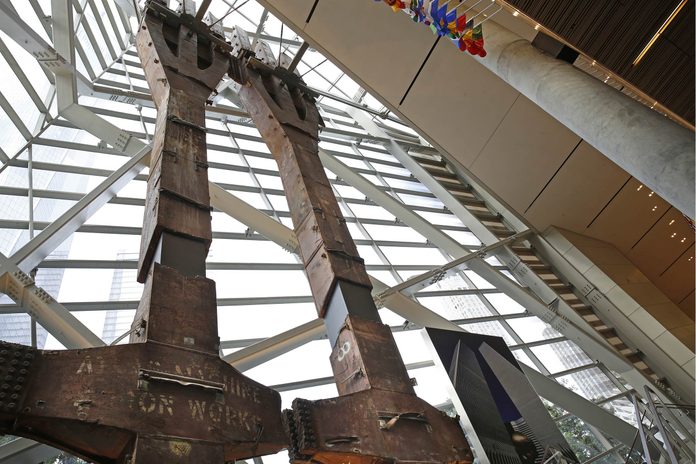
One World Trade Center’s 9/11 Museum is historic
The 9/11 Museum houses videos of first responders and survivors, as well as artifacts from the original World Trade Center, including a ticket from the South Tower’s observation deck and two tridents from the buildings. Other artifacts in the museum include a damaged firetruck and the Last Column, a 36-foot-tall steel beam recovered from the remains. The museum also has interactive timelines and oral histories tracing the events of 9/11 for visitors to explore.
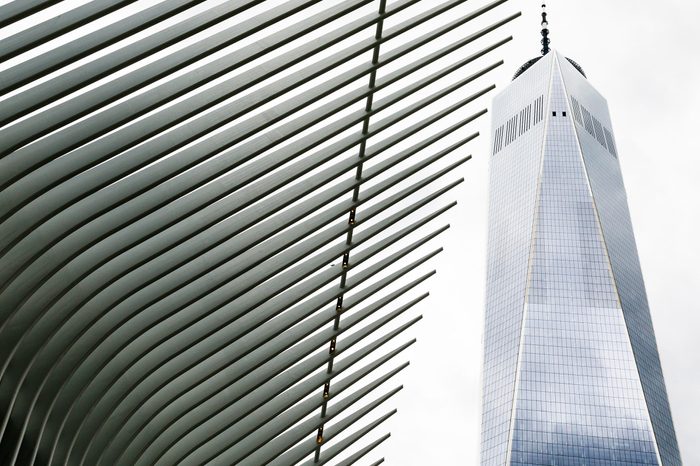
One World Trade Center incorporates complex geometry
The building has a cubic base, and its edges form eight isosceles triangles. This makes it look like a rectangular tower that has been twisted. Near its middle, the tower forms a perfect octagon, which extends to the top to end in a square glass parapet.
Why trust us
At Reader’s Digest, we’re committed to producing high-quality content by writers with expertise and experience in their field in consultation with relevant, qualified experts. We rely on reputable primary sources, including government and professional organizations and academic institutions as well as our writers’ personal experiences where appropriate. We verify all facts and data, back them with credible sourcing and revisit them over time to ensure they remain accurate and up to date. Read more about our team, our contributors and our editorial policies.
Sources:
- Britannica: “One World Trade Center”
- Skidmore, Owings & Merrill: “One World Trade Center”
- Texas A&M University: “One World Trade Center”
- Steel Institute of New York: “One World Trade Center Structure”
- ResearchGate: “One World Trade Center”
- 9/11 Memorial & Museum: “The Survivor Tree”
- World Trade Center: “7 World Trade Center”
- 9/11 Memorial & Museum: “About the Museum”
- Street Easy: “How Many NYC Blocks Are in a Mile?”
- 9/11 Memorial & Museum: “9/11 Memorial reaches major construction milestone (Updated X2)”



















